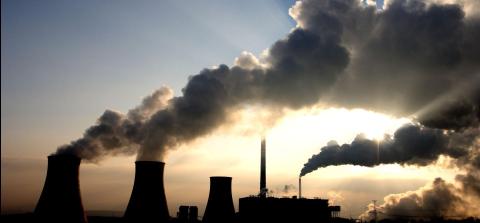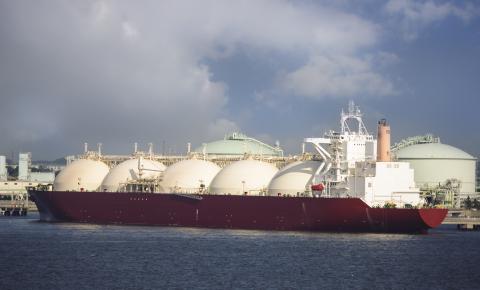The global energy transformation is well underway

(SYDNEY) – The global energy sector transformation is a technology‑driven disruption fueled by five compounding factors. These include technological innovation driving the economics of renewables below grid parity, global capital markets increasingly fleeing thermal coal, and key countries and leading corporates repositioning their climate and energy policies. Then there is China, seeking to lead the next industrial revolution.
The economics of renewables are working
The global energy transformation is being driven by the combination of accelerating technology innovation and economies of scale. This has led the cost of electricity generated by wind farms to drop by 50% this decade, while solar costs have declined by well over 80%.
Offshore wind is set to follow a similar deflationary cost trajectory. Lithium ion batteries have likewise dropped in cost by over 50% in the last three years, putting electric vehicles on a path to displace internal combustion engines this coming decade.
Solar costs are also dropping in the four largest electricity markets in the world. While solar costs have diminished 50% in the last four years in Japan, they are still well above grid parity. In contrast, both the U.S. and India saw renewable energy go below grid parity with thermal power in 2017. At the same time, China is on target to achieve grid parity by 2020. With continuing solar cost deflation of some 10% annually, these trends will continue.
Alternative energies are creating a wave of stranded fossil fuel assets. As a leading market for renewables, India is now grappling with some US$60bn of thermal power projects in financial distress, unable to compete with low-cost renewables and hence repay loans.
Solar costs have declined globally by well over 80%.
Global capital is fleeing coal
IEEFA has tracked the number of globally significant financial institutions that have introduced polices to restrict lending, insurance and investing in thermal coal mines and coal-fired power plants.
Most recently in May 2019, Japan’s Mizuho Financial Group and Mitsubishi UFG Financial Group both announced coal lending restrictions. This built on similar announcements in April 2019 by Singapore’s three leading banks: Development Bank of Singapore (DBS), Oversea-Chinese Banking Corporation (OCBC) and United Overseas Bank (UOB).
To date, 113 globally significant financial institutions are exiting coal. Of the top forty global banks, 45% now have coal lending prohibitions.
There is a new announcement occurring on average every week to date in 2019.
This capital flight from the coal sector is resulting in developments like Adani’s proposed Carmichael thermal coal mine in Queensland being unable to find external finance.
Government policies are reinforcing the trend away from coal
In 2015, India set a target to build 175 gigawatts (GW) of renewables by 2022. Three years later, the ambition was lifted to 500GW by 2030. Global capital is endorsing this new low-cost solution.
India is not alone. South Korea recently set a target to build 58GW of renewables by 2030, while Taiwan set a target of 27GW by 2025.
Earlier in 2019, Thailand introduced a new energy plan to 2037, and coal’s market share target was halved to just 12%. That Thailand is also jumping onto the renewables bandwagon is not what the coal industry was expecting.
Increasingly, the low cost of renewables is making more ambitious targets a sensible economic proposition.
Leading corporates are pivoting away from coal
In May 2019, BHP announced it would no longer invest in thermal coal. The technology landscape had moved on, and the need to decarbonise to achieve the Paris Agreement means BHP sees thermal coal as increasingly obsolete.
The need to decarbonise to achieve the Paris Agreement means companies see thermal coal as increasingly obsolete.
RIO Tinto completed its global exit from coal in 2018, having taken advantage of buyer interest to exit without significant losses since 2014.
Australia’s leading industrial conglomerate announced acquisition plans in both lithium and rare earths in May 2019, both key inputs into low carbon emission industries. It is no coincidence that Wesfarmers also completed its exit from coal mining in 2018.
And the Commonwealth Bank recently announced it was the first Australian signatory to RE100, a global corporate leadership initiative bringing together businesses committed to 100% renewable electricity.
China plans to dominate this new Industrial Revolution
China installed 45-50% of all solar globally in both 2017 and 2018. It accounted for half of all electric vehicle sales globally in 2018 and is the world’s largest miner and processor of lithium and rare earths.
China is on a clear path towards decarbonisation and is a world leader in zero emission technologies of the future.
In May 2019, China’s National Development and Reform Commission announced a tender for 21GW of renewable energy, an investment program of US$25bn. This is the largest renewable energy investment in global history, and there is no subsidy support.
With this, China will reach its target of grid parity for both wind and solar by 2020.
Where to next?
IEEFA views the combination of technology, economics, finance, energy security and the global need to deliver on the Paris Agreement as underpinning a progressive decarbonisation of global energy markets. Reduced air pollution and deflationary renewables are two added benefits that make this trend assured.
It is time for Australia to prepare for the inevitable technology-driven energy disruption that is occurring everywhere else.
This article was first published in John Menadue – Pearls and Irritations on 30 May 2019.
Tim Buckley is the Director of Energy Finance Studies Australasia, IEEFA.
Related Links:
IEEFA update: Why renewables are the solution for Australia
IEEFA Australia: Key thermal coal off-takers continue to abandon coal-fired power projects















